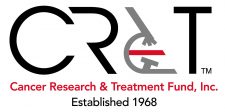Maybe it was a chicken
By Karla Layden
No one is ever sure which came first, the chicken or the egg. Well, for me, it appeared to be the egg…or shall we say, something the size of an egg? Nothing painful, but suddenly appearing over my left collarbone. A pulled muscle? It would go away. Of course it would go away. I only got sick with things that went away.
The egg didn’t go away. Thanksgiving holiday was coming. I made an appointment with my hometown doctor. He pushed and pressed and poked the “egg,” did a little hmmming and said he thought it was a muscle bunch, and that he would like to biopsy it. I could feel the color drain from my face. He could see the color drain from my face. Abandoning that tack for the moment he asked me to take a medication that would bring down the swelling and we’d see if that worked.
It did…but…there was that little blip in there, the size of a pea. It wasn’t quite gone at Christmas. A bit more hmmming from Dr. Becker and then he went the way of Solomon the Wise, “Karla, you are about to return to a university with a medical school and a medical center for the students. Why don’t you go see someone at the med center and have the doctors give us a second opinion?”
Being the obedient little Catholic school girl that I am, I did go to the Med Center, only after I had registered for that semester’s courses. Eventually, a doctor saw me. He examined me and looked at the egg. It was unswollen, but the blip was still there. He excused himself for a few minutes and came back with another white-coated figure who looked, pressed, pushed and poked and left the room with doctor #1. A few minutes later, doctor #3 came in and did the same thing. Dr. #4 was a woman. Dr. #5 was the head of the Medical Center. Big guy, asked a few questions, had me puff up my neck by holding my nose and blowing out. Cute little trick. He didn’t leave. “I’d like to have you see a surgeon and get this biopsied.”
Doctor’s Hospital was located on the edge of the campus of the University of Miami in Coral Gables. Mom and I went over from my campus apartment with my little go bag (in those days it was a ditty bag, we didn’t go anywhere in a hurry then). I had to go to the lab for bloods. Seems like the easiest thing in the world. Don’t you believe it! Multiple sticks later, the phlebotomist on duty gave up the ghost and asked for an IV nurse to see me in my hospital room and draw the blood. By then, I was tense and upset and wishing I’d never gone to the Med Center. The IV nurse came in and looked carefully at my arms. Calmly and slowly she got a baby-gauge needle, wiped alcohol on the spot (if only she had poured it down my throat), and stuck me. Done. I remember my mother thanking her and looking at me and saying, “Honey, you have your smile back.”
For a while…
The next morning I went to surgery, sacrificed three lymph nodes. A nerve was cut to get at them that left me numb in that spot for twenty-five years. The wait for the pathology verdict began. Three days and three pathologists later, my mother was told that I had Hodgkin’s Lymphoma. That information was never actually passed on to me. One day months later I was left alone in an examining room with my chart. After a few moments of worrying about not being supposed to read it, I looked. In time I found a reasonable definition that told me what I hadn’t known, but had intuited. I had a form of cancer.
Thirty-five years later, I developed Non-Hodgkin’s Lymphoma. For nearly forty-five years, I have survived. I do pretty much all that I want to do and when my memoirs come out, they will need to be “boxed” like Proust, because I have a lot to say!
That egg crossed the road and is on its way, racing to a broken down coop somewhere. I get to be a living reminder that cancer is not a death sentence, it is simply a unique lifestyle.
The only chickens in this story were the two lymphomas; I didn’t back down, neither did the many doctors who rescued me from that no man’s land of illness to another life through the leadership and efforts of Dr. Richard Silver, researchers and donors to CR&T whose heroic sacrifice and generosity made available to me the treatment that makes it possible for me to be writing here.
